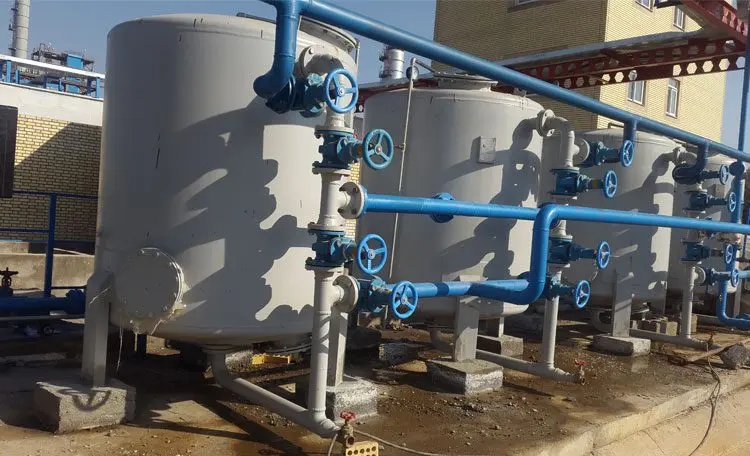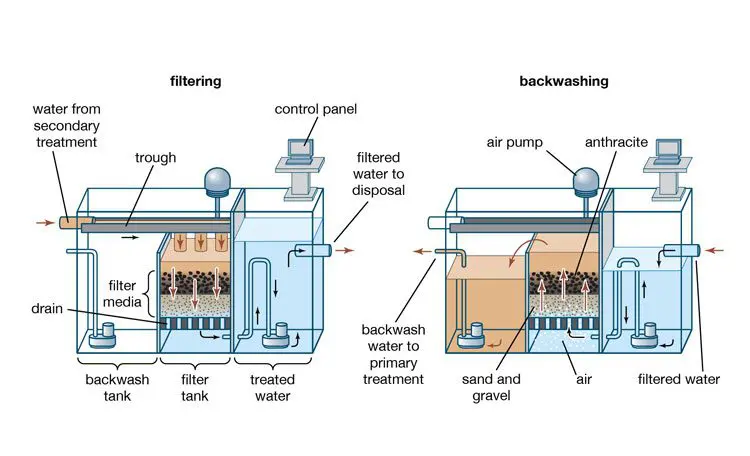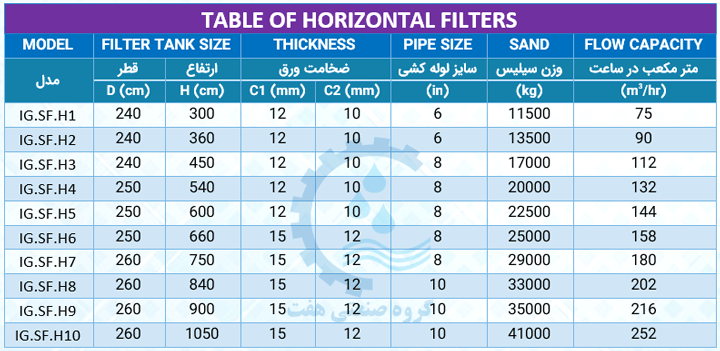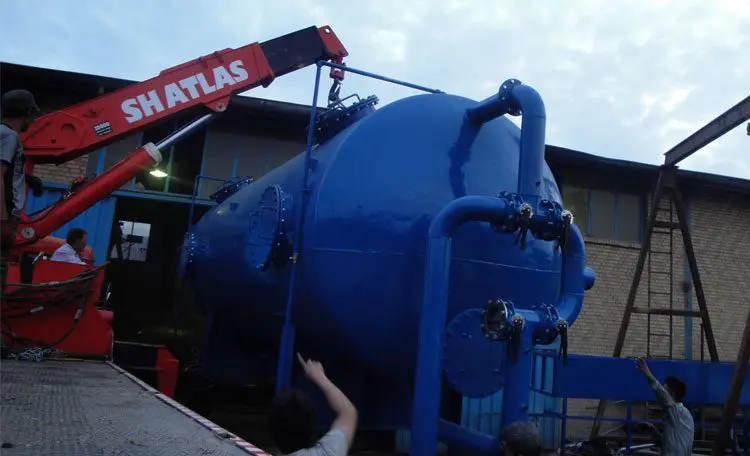Advantages of water purification with Sand filter
Extensive use of sand filters shows their great advantages over other water treatment methods, the most important of which are the following:
· Easy installation, maintenance and repair
· Cheap price of sand filter
· Very high diversity in terms of sand filter capacity and water passage rate
· High water purification power with removal of particles larger than 100 microns
· Easy backwashing
Wash Sand Filter
The passage of suspended particles in the water over time causes a large volume of them to be placed on the body of sand and silica on the nozzle and reduce the quality of the output water. For this purpose and like other water purification methods, it is necessary to wash the device periodically. In the design and production of sand filters, sand filter washing is often provided by reverse washing method, in which water passes through the nozzles inside the tank with high pressure and in the opposite direction of water flow. By doing this, the particles and dirt located between the silica grains will be removed and completely cleaned.
Ways to increase the efficiency of sand filters
To increase the efficiency and effectiveness of the sand bed in this filter, it is necessary to consider several important points, which are:
· The size and amount of sand grains must be carefully selected. Depending on the capacity, size and dimensions of the tank, the amount and number of grains of sand and the amount of large and small grains can be determined.
· How to reverse wash and how long it takes to do it periodically are other things that strongly affect the efficiency of the sand filter. It should be noted that the method of washing and the amount of pressure applied to the bed should be such that it can increase the volume of the bed by up to 15%
· The speed of water passing through the bed can also have a high impact on the efficiency of the device. To better understand this issue, it should be noted that the higher the pressure and velocity of water passing through the bed, the more the cleaning power and the volume of the bed will increase.
Types of silica bed in sand filter
Silica bed is one of the most important and main parts in sand filters, which has a very high impact on the power of the device and the quality of the output water. The silica substrates used in this device can be considered as single layer and multi layer. In the single-layer type, a thin bed with a small diameter of sand is placed in the machine, and in order to increase the efficiency and strength of the filter, several layers of sand and silica may be used. To improve the quality, it is also necessary to carefully select the size of sand grains in different layers and stack them from small to large.
The best time to change the sand bed
Reverse rinsing can reduce the contamination of the substrate to a desirable level, but over time the silica grains in the substrate will lose their strength. For this reason, in addition to washing, it is necessary to place high-quality silica grains in it to revitalize it. Depending on the amount of contaminants in the water and the type of silica grains, the time of substrate change will vary. In general, the bed can be used without the need to change it for a period of 5 to 10 years. One of the important signs that shows when to change the sand bed is the distance between the reverse washing steps. As this time is shortened, it gradually means that you have to change the bed.
Price of sand filter
The price of sand filter is one of the most important factors in choosing and buying it. Because sand filters are so versatile, they are quite different in price. So that it is not possible to determine with certainty what the price of a sand filter is. Sand filters are priced according to their type, capacity and material used in the bodies. In order to know the price of the sand filter, you can contact Haft Industrial Group and receive the rates according to the desired type of filter.
Design and production of sand filter
Design and production of sand filter is one of the most important services provided by Haft Industrial Group, which is performed by experienced engineers in the field of water and wastewater treatment. In order to place an order for the design and production of sand filters under pressure, slow and fast gravity or to buy filter filters produced by this collection, you can use the communication channels mentioned at the bottom of the page. The experts of Haft Industrial Group will provide the necessary advice in order to buy the right option according to the desired environment and purpose.









Leave a Reply